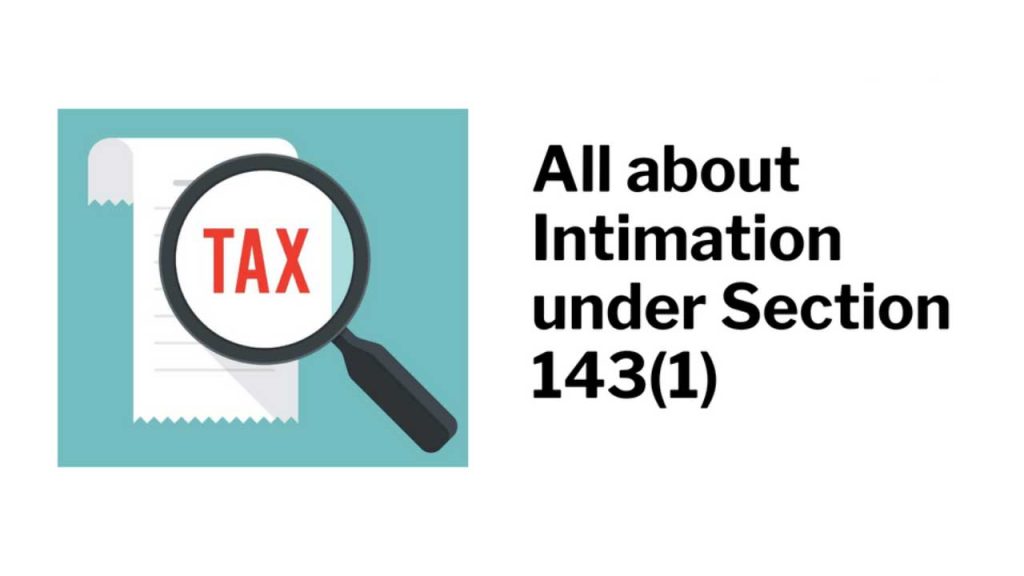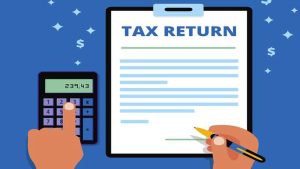Have you got a notice under section 143(1)? Don’t be concerned! It isn’t always accompanied by demand or note for the payment of income tax. It will represent the sum of a refund that you will get earlier rather than later.
The income tax department will send you an u/s 143(1) notification once your return has been processed.
Intimation u/s 143(1) is a list of the information you’ve sent to the IRS and the information the IRS has noticed when reviewing your return. The intimation u/s 143(1) essentially appears to contain the preceding details
(a) Permanent Details of assessee like name, address, etc
(b) Income Tax Return filing details like acknowledgment number, filing date, etc
(c) Communication reference number
(d) Refund sequence number
(c) Tax Calculation as provided by you in the Return of Income
(d) Tax as Computed under section 143(1) {i.e. As per Department}
Whenever a return is sent to the Income Tax Authorities, it is determined by the following automated reviews as part of a review process:
Must Read – What is Section 80C?

The return contains arithmetic errors.
- An inaccurate claim, as shown by any facts included in the return. If the deduction u/s 80C is asserted in excess of the highest allowable deduction u/s 80C, i.e. Rs 1,50,000, the excess will be prohibited and expressed in the u/s 143 intimations (1). Another instance is rent income, which is excluded from company income and not reflected in Income from House Property.
- Impermissibility of expenses reported in the tax report but never included in the total income calculation in the return.
- Form 26AS, a summary of advance revenue, self-assessment tax, and TDS, among other things.
- Addition of revenue from Form 26AS, Form 16A, or Form 16 that isn’t recorded on the ITR (it is applicable for returns filed up to AY 17-18).
- If a return is filed after the deadline, the losses will be carried forward to the following year or held off against losses from the prior period.
- Is it true that a deduction under section 10AA, 80-IA, 80-IAB, 80-IB, 80-IC, 80-ID, or 80-IE was taken just after Income Tax Return’s due date?
- Computation of Tax, Delayed filing fees and Interest, etc.
Once these tests have been completed, the IT department gives an Intimation u/s 143(1) in the following situations:
- Increase/decrease in Tax/Interest Payable, or
- Increase/decrease in Refund, or
- Adjustment that makes a change in the loss claimed
However, even though the situation does not meet the three conditions stated above, you may still be eligible for it. The Income Tax Department sends Intimation u/s 143(1) to all taxpayers, as seen in practice.
Action to be taken by the taxpayer after receiving an intimation under section 143(1)
- Check such items in Section 143(1) intimation as a first step to confirm the report is for your return and the information provided is for much the same financial year as stated in Section 143(1) intimation.
- Check the following information: name, PAN, address, assessment year for which note was submitted, and e-filing acknowledgment number.
- If you can recognise the errors you produced when submitting your return from the 143(1) notice and they can be corrected by submitting a revised return, kindly do so by signing into the IRS efiling website.
- If no errors were rendered and you disagree with the corrections created by the CPC/computerised framework, you can submit a digital rectification application under Section 154(1) intimating the clarification of the error found in the Section 143(1) intimation. Please see our post on how to file a rectification application for more details.
- You could also file digital appeals or email your evaluating officer if you are dissatisfied with CPC’s handling of your rectification return. If the CPC/assessing officer does not respond satisfactorily, you may file a report with the income tax ombudsman.
That being said, if the taxpayer responds to the tax demand made by the income tax department after making the above amendments, the taxpayer must pay the taxes. About how to pay taxes, see our post on OLTAS challan bill. Please select ‘Tax on daily assessment (400)’ as the form of payment in the challan when paying tax on a claim presented under this Section.



